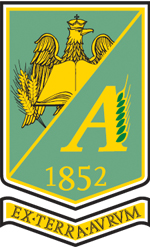Published in Scientific Papers. Series A. Agronomy, Vol. LX
Written by Elena PETCU, Narcisa BĂBEANU, Ovidiu POPA
Of the many methods for weed management one of them is using allelopathy in weed management programs. Application of allelopathic wheat and triticale cultivars is thought a resources conservation and environmental friendly way of weed bio-control, and could promote the sustainable development of agriculture. Screening or evaluating the allelopathic potential of wheat and triticale variety is the first step. This experiment was done to develop a new simple and valid methods for allelopathy studies and facilitating the use of some physiological traits in such researchs. One method was to assessment the allelopathic potential of some winter wheat and triticale genotypes using aqueous extract from the leaves and shoot of each genotype. Evaluation of allelopathic potential of these genotypes was done by measuring the germination capacity of ryegrass seeds (Lolium rigidum). Results showed that the allelopathic activity of wheat was associated with extract concentrations and wheat/triticale cultivars. Germination percentage of ryegrass seeds ranged from 0.2 to 92 %. In average for all used concentrations, extract of Titan (triticale) reduced ryegrass germination by 61% and most suitable concentration to evidentiate allelopatic activity was 5%. Another method consisted in incorporating in soil of the plant residues from winter wheat and triticale genotypes. Evaluation of allelopathic potential of these genotypes was done by measuring the length of root of amaranth (Amaranthus retrophlexus) and ryegrass (Lolium rigidum). Results demonstrated that the root length of weed species were significantly reduced in the presence of some wheat cultivars. Wheat and triticale varieties differ in allelopathic potential against ryegrass and amaranth and the differences were evidentiate by both methods
[Read full article] [Citation]




